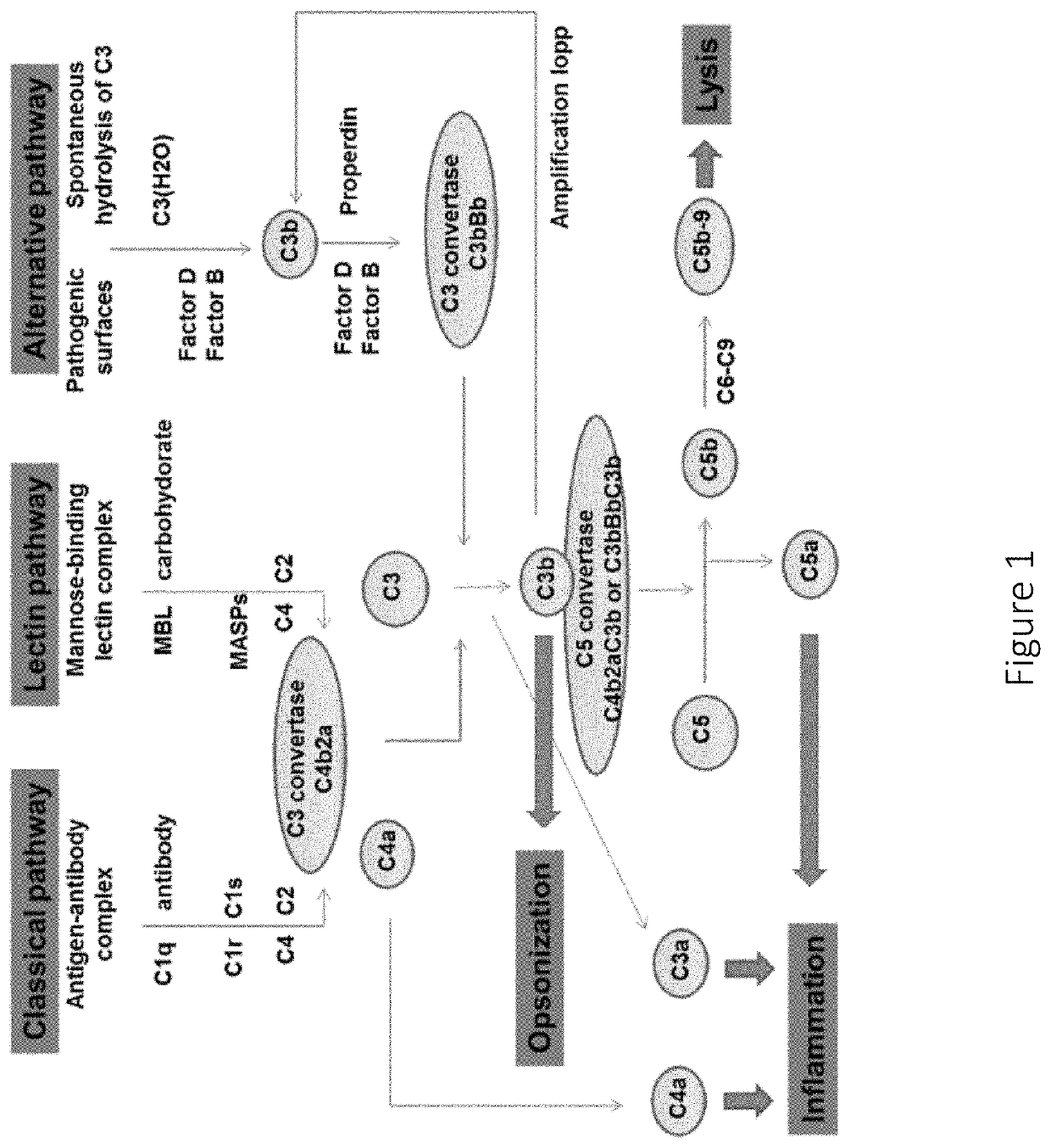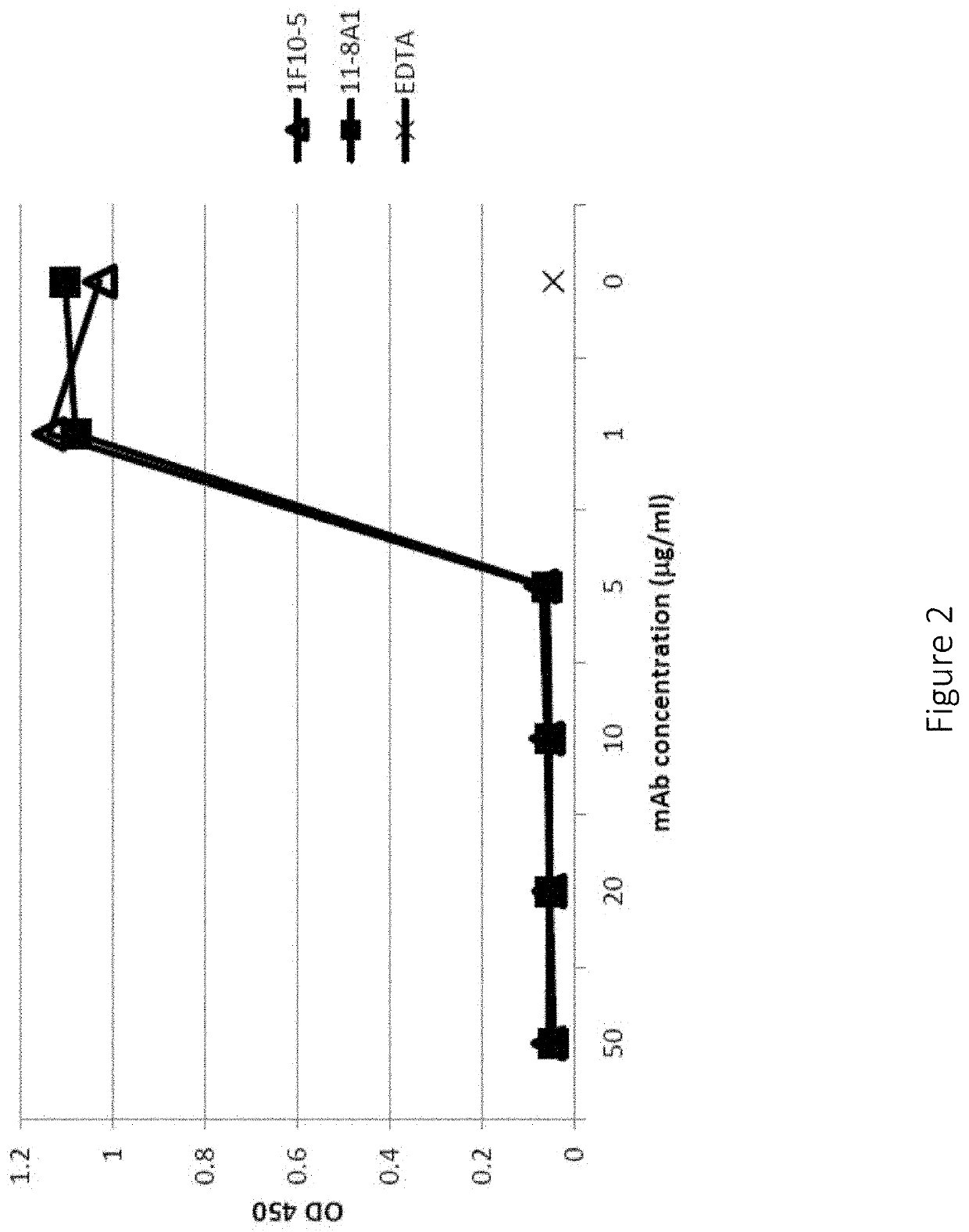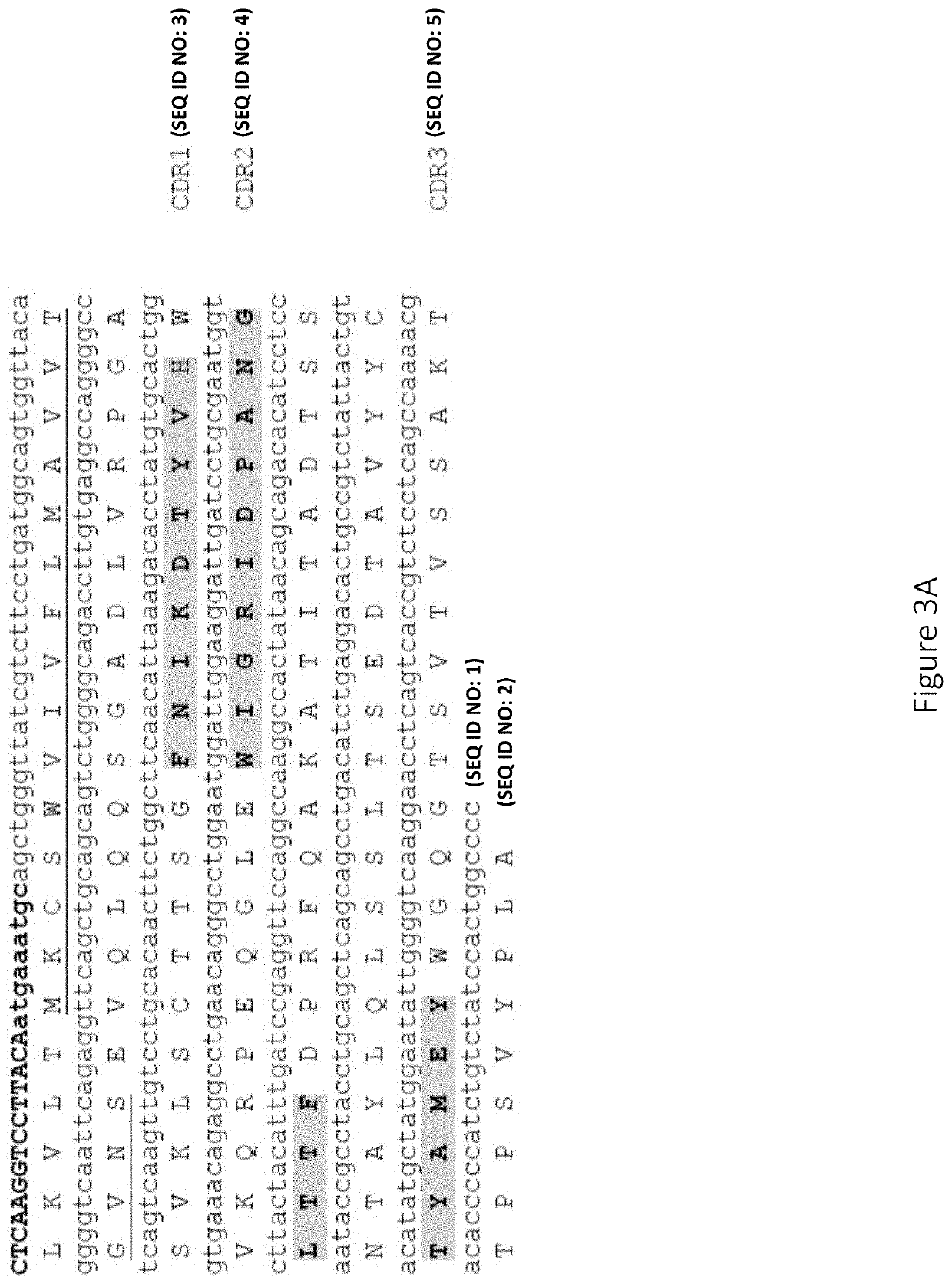Anti-factor d antibodies and uses thereof
a technology of factor d and antibodies, applied in antibody medical ingredients, immunological disorders, drug compositions, etc., can solve the problems of inability to block factor d systemically and inability to induce inflammation, and achieve the effect of improving pharmacodynamics and superior pharmacodynamics
- Summary
- Abstract
- Description
- Claims
- Application Information
AI Technical Summary
Benefits of technology
Problems solved by technology
Method used
Image
Examples
experimental examples
[0213]The invention is now described with reference to the following Examples. These Examples are provided for the purpose of illustration only and the invention should in no way be construed as being limited to these Examples, but rather should be construed to encompass any and all variations which become evident as a result of the teaching provided herein.
[0214]Without further description, it is believed that one of ordinary skill in the art can, using the preceding description and the following illustrative examples, make and utilize the compounds of the present invention and practice the claimed methods. The following working examples therefore and are not to be construed as limiting in any way the remainder of the disclosure.
example 1
[0215]Anti-human factor D monoclonal antibodies were generated using the hybridoma method first described by Kohler et al. (1975, Nature, 256:495) with some modifications. Balb / c female (Jackson laboratory) mice were immunized with 100 μg of purified human factor D (from human plasma) emulsified with adjuvant. At day 21 and day 35, the mice were again immunized with 100 μg of purified human factor D emulsified with adjuvant. Mice were boosted with 25 μg of purified human factor D two times before fusion. Then, mice were sacrificed by cervical dislocation and spleen was isolated for preparation of single cell suspension by mechanical disruption. The spleen cell suspension was washed once with HYB-SFM (Invitrogen)+10% FBS medium and cells were counted, and mixed with X63-Ag8.653 myeloma cells (ATCC) in a 2:1 ratio. Cell mixture was again washed with HYB-SFM medium, and the cell pellet was prepared by centrifugation (1000 rpm×5 min). The cell pellet was gently disturbed and loosened an...
example 2
[0216]Micro titer plates were coated with Lipopolysaccharide (LPS) (2 μg / well) in PBS (phosphate buffered saline) at 37° C. for 1 hour. After washing the Plates with PBST (phosphate buffered saline and 0.05% tween) for 3 times plates were blocked with 1% BSA in PBS for 1 hour at RT. Either 10% normal human serum (NHS), normal cynomolgiis serum, normal rhesus monkey serum, normal guinea pig serum, normal mouse serum was pre incubated with different concentration of 11A8-1 mAb or 1F10-5 mAb or chimeric 11A8-1 at 4° C. for 1 hour. 10% Serum in Mg++-EGTA GVB++ buffer served as a positive control and 10% Serum in GVB++ EDTA buffer served as a negative control. Plates were incubated with NHS at 37° C. for 1 hour, and then stopped with Cold 10 mM EDTA in PBS and washed for 3 times. Plates were incubated with HRP conjugated goat anti human C3 polyclonal or anti mouse C3 polyclonal C3 antibody 1:4000 diluted in blocking buffer at room temperature for 1 hour. Plated were washed 3 times and de...
PUM
| Property | Measurement | Unit |
|---|---|---|
| concentration | aaaaa | aaaaa |
| concentration | aaaaa | aaaaa |
| concentrations | aaaaa | aaaaa |
Abstract
Description
Claims
Application Information
 Login to View More
Login to View More - R&D
- Intellectual Property
- Life Sciences
- Materials
- Tech Scout
- Unparalleled Data Quality
- Higher Quality Content
- 60% Fewer Hallucinations
Browse by: Latest US Patents, China's latest patents, Technical Efficacy Thesaurus, Application Domain, Technology Topic, Popular Technical Reports.
© 2025 PatSnap. All rights reserved.Legal|Privacy policy|Modern Slavery Act Transparency Statement|Sitemap|About US| Contact US: help@patsnap.com



